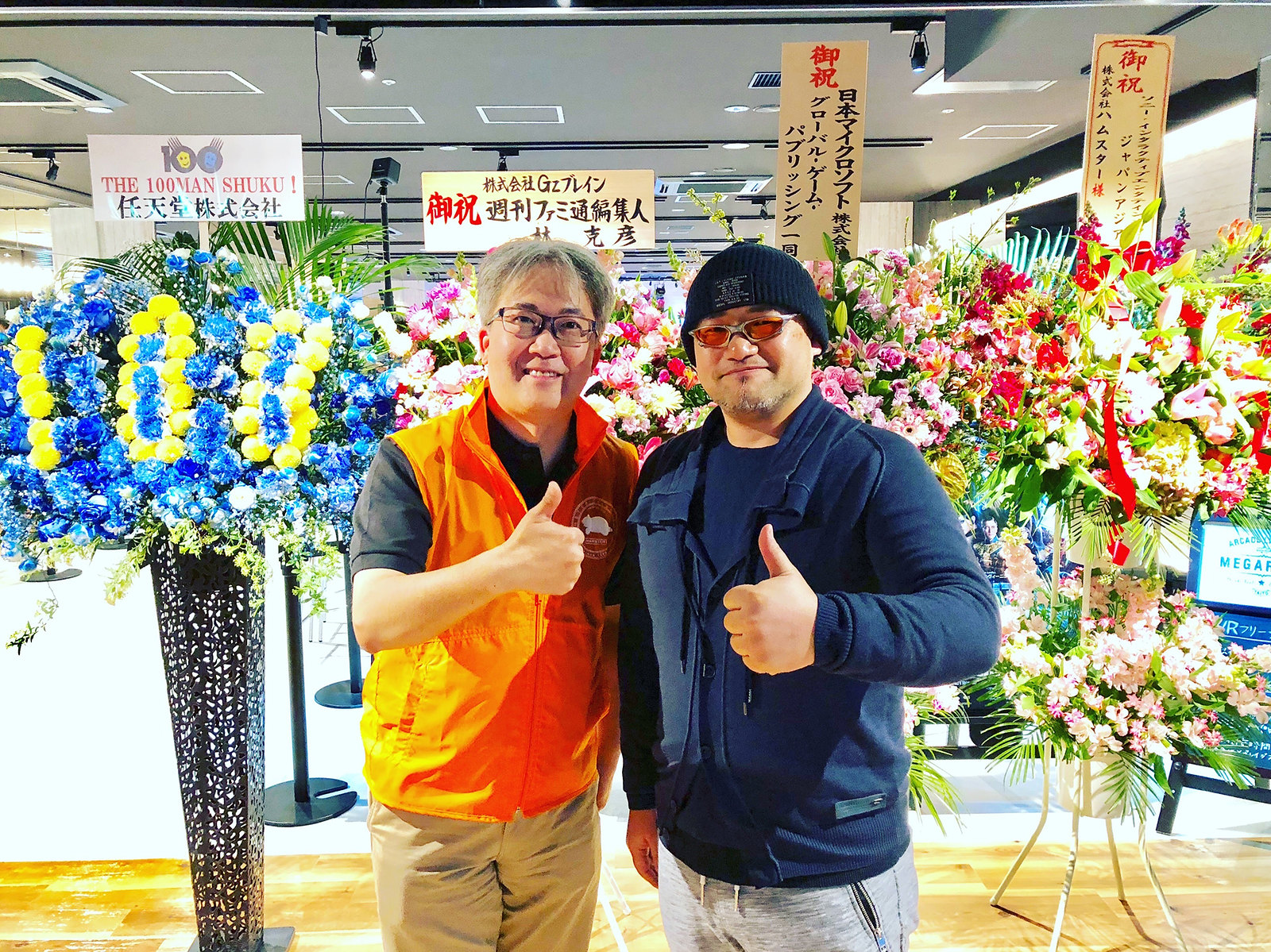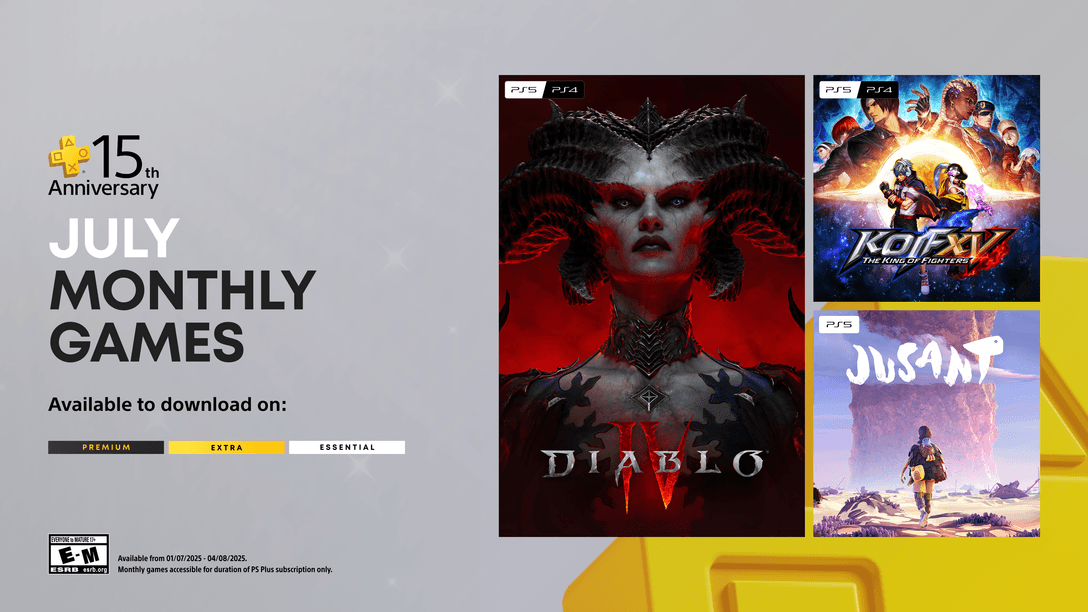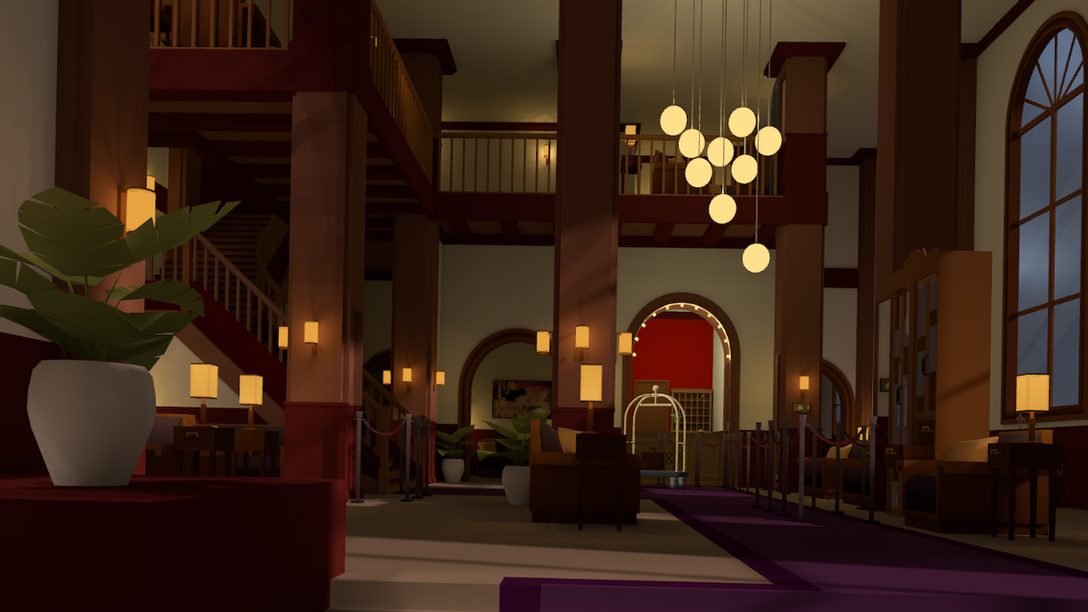
Creative director Hideki Kamiya details the history behind this labor of love.
This is Hideki Kamiya, Chief Game Designer at PlatinumGames and creative director of Sol Cresta.
Did you all enjoy the new Sol Cresta trailer? Some of you may be thinking, “A sequel to Moon Cresta and Terra Cresta in this day and age? And from PlatinumGames? And it’s not an April Fools joke after all?”
To explain a bit for those who may not know, Moon Cresta and Terra Cresta were released in the 80s by a game company called Nihon Bussan, better known as Nichibutsu. Both games were vertically scrolling shooters that included a play mechanic where you docked with friendly ships.
At a time when shooting games where you fought alone were the norm, aggressive gameplay that made your ship more powerful as you docked with allies had gamer kids burning with excitement back then, and both games took a place in gaming history. Of course, I was one of those gamer kids and experienced the fever in real time.
Sol Cresta itself is a “free-form docking and shooting” game that PlatinumGames will release, and it bridges the gap of 36 years since the release of Terra Cresta in 1985 as the official sequel and next entry in the Cresta Series.
But just how did this miraculous project come to be? Well, I’d like to tell you the secret of the birth of Sol Cresta.
Starting with Bayonetta and continuing with titles like Anarchy Reigns, Metal Gear Rising: Revengeance, The Wonderful 101, Nier: Automata, and Astral Chain, PlatinumGames has been fortunate to have the titles we’ve released receive acclaim for the “action feel,” and we’ve come to be known as “the studio that makes action games.”
However, as a studio we want to make all kinds of fun games, not just action games.
Since I was a kid, I played and had fond memories of a lot of games; shooting games (although these days this tends to mean FPS), adventure games, RPGs, and more. Eventually I thought, “I want to make games too,” and that dream came true when I became a game designer.
Moon Cresta ©2014 HAMSTER Co.
Terra Cresta ©2014 HAMSTER Co.
But as times changed, technology advanced, and the player base grew, the very nature of games and the corresponding trends changed a lot and having become a creator myself, I was involved with large-scale projects centered around 3D visuals and gameplay. Before I knew it, the kind of games I knew as a kid—the simple, almost primitive yet packed with fun “classic games”—had disappeared from the mainstream market.
This is getting into production talk, but it is no simple task to launch a game project in a genre that’s not mainstream. Furthermore, in my position it’s also my duty to develop the company’s flagship titles. But even while buried by my workload day in and day out, I never forgot the way I felt when I first dreamed of making games, and if only on paper I still hatched plans in secret for games that can recapture that nostalgic feeling and keep them warm inside.
Time passed, and about three years ago, I called our studio head Atsushi Inaba into a meeting room and revealed my idea for a certain game. I said, “I have an idea for a vertically shooting game where you play while combining and reconfiguring three fighter jets.”
Most shooting games are simple games where you pilot jets, fire bullets, and shoot down the enemy. However, there have also been a few unique games with standout gameplay features like a variety of powerups that you can choose from, or support craft that can be used for offense and defense.
If we were going to take on a genre that is itself considered a “classic,” the game would need to have the kind of unique gameplay like the titles created by industry pioneers, or there would be no meaning in the attempt. With the firm belief that the three-fighter “dock-and-split” system I’d envisioned would help realize a new game experience on par with the historical titles that had come before, I shared my idea with Inaba.
Inaba quickly became interested as I explained, and since he also had the desire to make a game like the ones he was crazy for as a kid, he may have been waiting for an opportunity like this. The draft of the idea I handed to Inaba started like this:
Title: Sol Cresta
This game is a “free-form docking and shooting” game and carries on the spirit of Moon Cresta and Terra Cresta to become the final chapter of the “Cresta Saga.” It elevates the series’ “docking” mechanic to make it the core of gameplay.”
Original GDD for Sol Cresta
My “dock-and-split” shooting idea came about during planning for possible new games, but as I was working out the details Moon Cresta and Terra Cresta, the games that arguably originated docking as a gameplay theme, popped into my head. Then I thought “How great would it be if I could take these games that I loved and build on their gameplay and world building?” As I thought about it, my imagination ran wild and my excitement couldn’t be contained.
Around that time, Hamster’s Arcade Archives classic game revival project was getting praise from players around the world, and that course of events may have also given me inspiration.
However, I did have some doubts. Since the founding of PlatinumGames, we’ve always had the desire to create our own original titles and realizing this project as the sequel to another company’s brand would mean abandoning that path. A feeling similar to regret still lingered in my mind.
And even as I shared the draft of my idea with Inaba out of the blue, I was also honest with him about the smoldering doubts saying, “We could also try to do this with a new setting, but what do you think?”
Without hesitation he said, “Wouldn’t it be more fun to make a sequel to the Cresta series?”
Once I heard his voice, all my doubts were blown away. I remembered the basics of being a creator and my own core principle — to make fun and exciting games for the players.
And that’s how the Sol Cresta project got started.
Although frankly, it shouldn’t have come to be at all. First of all, as I explained before, both Moon Cresta and Terra Cresta were developed by Nichibutsu, with the rights currently held by Hamster Corporation. PlatinumGames had no connection at all to either entity, or any right to make a sequel to those games.
It was then that Inaba and I had a discussion and got in touch with Satoshi Hamada, president of Hamster Corporation, who agreed to hear us out.
Actually, I had appeared occasionally on Hamster’s weekly live stream on Thursdays and had even gone out to eat with Mr. Hamada and talk about games with him. Of course, circumstances are different when it comes to business, and I knew that as someone deeply invested in the Arcade Archives endeavor, Mr. Hamada has an extraordinary love for classic games.
I worried about what would happen if I showed the usually gentle Mr. Hamada my indulgent draft and it angered him, or even worse if I betrayed his trust as a fellow lover of classic games. What if not just the Sol Cresta project, but also my friendship with Mr. Hamada came to an end? I stayed nervous right up until the day we had arranged to meet.
Finally, I returned to the Hamster offices. Even though I’d been there many times before to appear on stream, the familiar meeting room seemed completely different as I sat there with Inaba, and it felt more like a chilly dungeon.
I took out the draft of the project and handed it to Mr. Hamada with shaking hands. I never felt more like something I wrote could be a demonic recipe for disaster. And in 26 years in the game industry, I’ve never been more nervous than I was then.
Mr. Hamada took the draft in hand and read quietly for a while. Inaba and I just watched with bated breath. It seemed like time froze between us, feeling incalculably long and heavy.
But Mr. Hamada agreed to support the project on the spot!
Of course, that couldn’t have been a simple decision. Being the lover of classic games that he is, I’m sure a lot ran through Mr. Hamada’s head as he read the document. But I don’t believe his decision was purely for business reasons, nor out of pity for me as I shook like a lost dog. I’m sure he made that decision because he trusted us and our plan with the great Cresta series.
Right then, while I was overjoyed about getting approval, I also felt a new sense of responsibility not to betray Mr. Hamada’s trust, and not to damage the name of the Moon Cresta and Terra Cresta name that industry pioneers had built up. And as someone who loved both games myself, I felt deep in my heart that I absolutely could not disappoint players who have faith in the Cresta name.
Mr. Hamada (left) and me (right) at the Arcade Archives million download celebration!
As you can see, the path to realizing the Sol Cresta project was a long one (I’ll save the thrilling tale of Inaba getting internal approval for the project during an unrelated important meeting for a dramatization).
Sol Cresta has the “Neo-Classic Arcade” label attached. The name comes from our goal of reviving the feel of “classic” games from the good old days that had the arcades abuzz with excitement in the present with current generation “neo” technology and creating a new gameplay experience.
I hope everyone looks forward to this title into which we at PlatinumGames have poured our hearts and souls!
To explain more about the “dock-and-split” system at the core of Sol Cresta, I’ll turn it over to director Takanori Sato on our official blog for details. Please check it out and start those mental scramble simulations to get ready for the release!















Comments are closed.
12 Comments
Loading More Comments